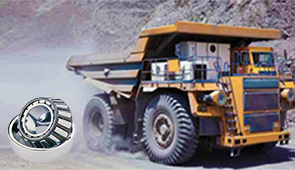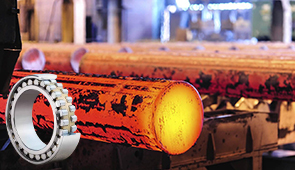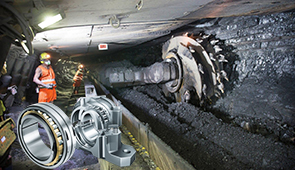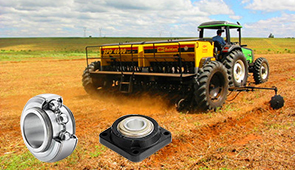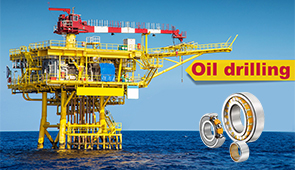Which Grease Provides Excellent Lubrication Under Moderate Loads and Also at High Temperatures?
Selecting the right grease is a critical factor in ensuring the optimal performance and longevity of machinery operating under varying conditions. Grease used in industrial and automotive applications is often subject to a range of challenges, including moderate load-bearing capabilities, exposure to high operating temperatures, and resistance to environmental factors such as water, dirt, or chemical contaminants. This article aims to provide a comprehensive overview of grease formulations designed to perform effectively in such demanding scenarios. By exploring the characteristics, composition, and applications of specialized greases, readers will gain an in-depth understanding of how to choose the right lubrication solution for their specific operational requirements.
What is the most commonly used grease in industrial applications?
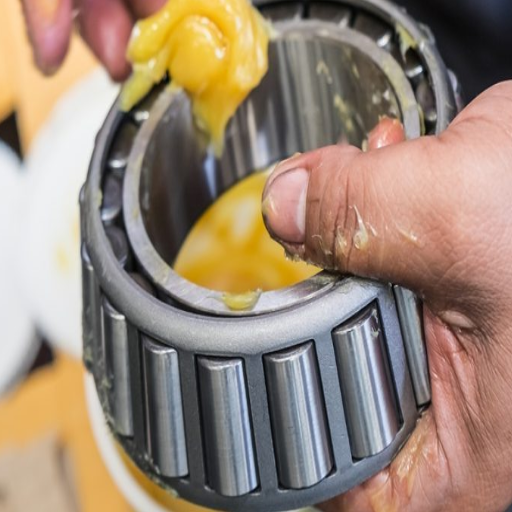
Lithium-based grease is the industry standard
Because of its unrivaled utility, efficiency, and affordability, lithium-based grease has become the primary lubricant across different industries. The grease is formulated with lithium soap thickening and high-grade base oils, granting it exceptional mechanical stability, water resistance, and temperature characteristics.
- Operating Temperature Range: -20 degrees to 120 degrees Celsius (or -4 to 248 degrees Fahrenheit) generally, although some grades can exceed those limits if formulated with specific additives.
- Drop Point: Estimated to be within the 190 to 220 degrees Celsius range (or 374 to 428 degrees Fahrenheit), which allows for greatly reduced leakage at high temperatures.
- Water Resistance: Able to withstand moisture greatly without getting washedout; useful for grease exposed to water or humid applications.
- Shear Stability: Capable of withstanding high mechanical loads while maintaining viscosity and structural shape.
- Load-Carrying Capacity: Typically enhanced by Extreme Pressure (EP) agents, the grease is well suited to withstand high load conditions.
Lithium-based grease is without question the industry standard lubricant used for moderate to high temperatures with variable environments when working with bearings, gears, and machinery parts.
How base oil affects grease performance in high temperatures
The formulation of grease is directly dependent on the characteristics of its base oil, and the behavior of grease in extreme temperatures is no exception. It is prudent to state that base oils possessing a greater viscosity index perform well under thermal stress because they have a propensity for retaining their viscosity over an extensive temperature range. High temperatures are particularly suited for synthetic base oils such as polyalphaolefins (PAOs) or esters because they have oxidative stability in addition to thermal resistance.
- Viscosity Index (VI): It is a higher VI (greater than 120) correlates with greater stability in viscosity at moderate and extreme temperatures which is crucial for lubricating activities at high temperatures.
- Flash Point: The need for high flash points, above 220°C for synthetic oils, is important as that reduces the probability of oil degradation or evaporation from heat.
- Oxidation Stability: Grease bases with greater oxidation stability prolong the service life of grease through high-temperature conditions by decreasing the breakdown of grease, thus prolonging its life in extreme conditions.
- Thermal Stability: In applications wherein temperatures soar above 150°C, synthetic base oils in contrast to mineral oils do not undergo thermal degradation which enables them to outlast in such scenarios.
It is stated with conviction that the selection of such base oils can perhaps feel easier as it enables optimum performance and reliability of grease at extremely high temperatures.
The role of thickener in creating an effective lubricant
Like any other lubricant thickener, it has a distinct effect on its physical stability and operational performance. As a containment structure to keep the base oil in position, thickeners give the lubricant a structure that allows it to endure variable operational environments.
- Dropping Point: The thickener is expected to begin softening at higher temperatures than the upper limit which is different from 180°C to greater than 300°C depending on the thickener type – lithium complex or polyurea.
- Shear Stability: Defined using ASTM D217 (Worked Penetration Test), consistency maintenance of a lubricant under mechanical influences.
- Water Resistance: The ability to resist water exposure, measured through water washout and water spray-off tests, e.g. ASTM D1264.
- Oxidation Resistance: One of the most critical factors for long term durability, often measured through method ASTM D942.
While developing an efficient grease, my first step would be to analyze thickeners that meet the application-related goals for effective functionality and longevity. Also, from a structural standpoint, the interaction between the thickener and the selected base oils has to be critically studied to ensure that the needed performance attributes can be achieved.
When should specialized greases be used instead of general-purpose options?

Water resistance considerations in grease selection
For underwater applications or industrial machinery subjected to washdowns, as well as outdoor equipment that can be rained on, specialized greases must possess enhanced water resistance to ensure efficiency in lubrication and corrosion protection.
- Water washout resistance: measures the quantity of specialized grease that is lost due to being exposed to a water stream for a certain period. Water resistant, specialized greases stay in their application despite being subjected to water, typically possessing a weight loss of less than 5%.
- Water Spray-Off: Grease adhesion to a fixed position is evaluated as practical high-pressure water sprays are applied. Formulation and application of effective water resistant greases is shown by low spray off values (usually below 10%).
- Corrosion Preventing Ability: This determines the ability of the grease to prevent rust or corrosion withstanding the contending environment(s). Water durability and performance of advanced water resistant greases is indicated by little to no surface rust or corrosion on the metal.
- Retention of Consistency in Wet Conditions: These greases must have higher mechanical stability under water-contaminated conditions and possess the ability to keep their consistency and structure; thereby ensuring protection.
Specialized greases designed with calcium sulfonate or aluminum complex thickeners, along with synthetic or semi-synthetic base oils, are greatly beneficial for water resistance. These compounds possess greater film strength as well as hydophobic characteristics, which makes them suitable for harsh conditions with high moisture exposure.
Additives that enhance grease performance under extreme conditions
When enhancing grease performance under extreme conditions, I focus on choosing targeted additives that address specific issues. Such additives are:
- Extreme Pressure (EP) Additives: High loads typically cause wear and pitting which is where sulfur-phosphorus and molybdenum disulfide compounds are useful. For example, sulfurized olefins are able to activate around 200°F and stay useful up to 400°F. Their optimum load-carrying ability ensures that they underperform while the conditions are hostile; they perform as expected.
- Anti-Wear (AW) Additives: ZDDPs are well known to reduce wear on metals as they form a protective layer over them, and ZDDPs with their complex structures, containing zinc, dialklyl, and dithiophosphate do it best. ZDDP is good at reducing wear at moderate temperature ranges on average 300°F and below.
- Antioxidants: Phenolic and aminic antioxidants extend the lifespan of greases by stopping their oxidation at high temperatures over 200°F. These modifiers go into blends in proportions from 0.5% to 3% by weight, which depends on the task at hand.
- Corrosion Inhibitors: Barium sulfonates or calcium sulfonates work well with rust and corrosion due to moisture or damp severe conditions, including salty areas.
- Viscosity Modifiers: PIBs are polyisobutylene’s which is a type of polymer. They boost the oil’s base and keeps it lubricating consistently throughout the varying temperatures in the form -40 degrees to 300 F and even beyond depending on the formulation.
- Solid Lubricants: Additives, such as graphite or PTFE, work as an efficient lubricant even in severe pressure and fluid temperature scenarios over 400°F, where fluid lubricants fail.
These additives have individual functions, and the decision to include them in grease compounds is based on the necessary application conditions and the expected working conditions.
Temperature limits of different lubricating greases
The different types of lubricating greases, and their respective upper and lower limits of temperature performance, are deeply dictated by the type of base oil and thickener used.
- Lithium Greases: Perhaps the most known and extensively used greases, with a range of operational temperatures ranging between -20°F to 250°F. Being multifunctional and affordable makes these useful for a wide range of general-purpose jobs.
- Lithium Complex Greases: These types of greases are meant for even higher ranges of temperature, extending the upper limit to around 350°F. These greases exhibit both better upper mechanical stability as well as thermal stability when compared to standard lithium greases.
- Calcium-Sulfonate Greases: Distinct due to their high resitance towards the water, these greases usually operate in the range of -20°F to 400°F. These also tend to maintain rigidity under very humid and even watery environments.
- Polyurea Greases: These greases are known to have long operational life in sealed applications. Their range of operational temperature is -30°F to roughly 320°F making this ideal for high-speed motor bearing and electric motor lubrication.
- Silicone-Based Greases: These types of grease have unmatched thermal stability and are silicone-based. Their application is subjected to very high temperatures, making them effective upto around 500°F.
- PFPE Greases: For PFPE greases, the temperature extremes of operation can be from -90°F to 750°F. Their applicability in aerospace and chemical processing industries highlights the importance of greases’ chemical and thermal stability concerning their use.
These limits are not exact and should be verified according to the requirements of the applications. Equipment performance combined with service life can be maximized if the appropriate grease type is selected based on the operating temperature as well as the surrounding environmental condition.
What are the key factors in selecting the right grease for your application?
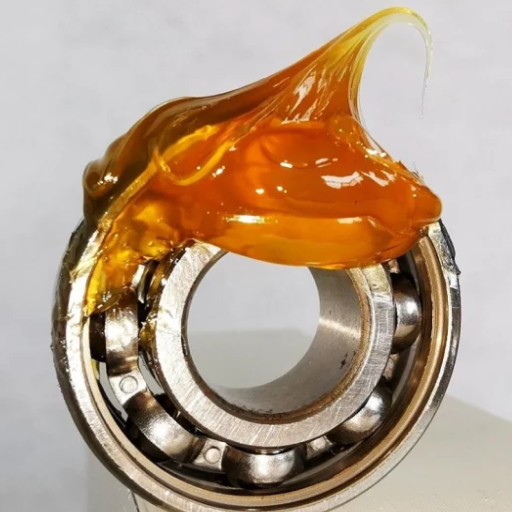
How to determine the appropriate grease consistency
Slippery substances are classified using the National Lubricating Grease Institute (NLGI) scale from 000 (semi-fluid) to 6 (very firm). The appropriate grease consistency that can be achieved, depends on the following technical characteristics:
- Operating Speed: Lower NLGI grades (like 000 or 1) tend to work well in high-speed scenarios since there will be less resistance and heat generated. On the other hand, high NLGI grades work for slow-moving parts whereby shear thinning is not so important.
- Load Conditions: Greater load applications often require greater stiffness (NLGI 2 or higher) to maintain a convenient lubricating film and mechanically sustain lubricant under heavy load. Otherwise, the lubricant will degrade under pressure.
- Operating Temperature: A grease with stable consistency is needed in high temperatures so that there isn’t too much softening or leakage. Check both the NLGI grade and the base oil viscosity index to ensure there is thermal stability.
- Environment: Colder applications may require NLGI 000 or 1 grease for better movement, but if there is too much extreme dirt, dust or even water, then an increased consistency along with water resistant thickeners are appropriate.
Evaluating these factors together with the mechanical design of the system will determine the right grease consistency that will provide performance and protection.
Compatibility issues when replacing old grease
While substituting old grease with new one, issues related to compatibility may arise as a result of the synergistic effect of thickeners, base oils, and even additive systems.
- Thickener Compatibility: The use of incompatible thickeners is bound to cause structural disintegration and hence, results in the softening or hardening of grease.
- Base Oil Compatibility: The grease being replaced and the replacement grease must have similar viscosity grades, and the base oil type must also be the same (either mineral or synthetic). If these are mismatched, film strength may be compromised leading to poor lubrication and vice versa.
- Additive System: Some additives like rust inhibitors and EP agents may cause destructive interference and hence poor performance.
These issues can be alleviated by first eliminating all traces of old grease from the system and then performing a trial run before making a complete substitution.
How does grease lubrication differ from oil lubrication?

Benefits of grease vs. oil in different industrial scenarios
When it comes to oil and grease lubrication, the choice of which to use is dependent on the particular operational goals and technical parameters. For long-term sealed lubrication, I find grease to be most useful in enclosed or difficult-to-access systems. Additionally, grease’s thick consistency makes it extremely useful in preventing leakage and contamination. Furthermore, grease is recommended for heavy shock loads and high contact pressures due to it having a stronger film.
However, oil is often recommended in high speed applications where there is friction or heat, as an oil’s fluid nature makes it such that there is effortless circulation which eliminates thermal build-up as well as contaminants. Additionally, oil is the best lubricant in the temperature ranges where precise viscosity control (e.g., ISO VG 32-320 grades) is needed as these cases allow optimal performance under different conditions.
- Operating Speed: Oil is ideal for fast-moving machines while grease is recommended for moderately slow machines.
- Temperature Range: Oil excels in high heat environments while grease does well in low to moderately warm environments.
- Load Carrying Capacity: Grease outperforms oil in extreme pressure situations due to specific additives.
- Contamination Risk: Oil is easy to evaporate and therefore does not seal surfaces as well whereas grease will not evaporate and provides better sealing surfaces against contaminants.
Grease and oil can be selected only if the equipment’s structure, environment, and operational requirements are met, ensuring maximum effectiveness and dependability.
The function of grease in reducing friction and wear
The efficiency grease helps with the reduction of friction and wearing is due to the fact that it forms a tough lubricating film between two moving parts. This film reduces the amount of metal-to-metal contact which lessens surface abrasion and increases the equipment’s lifetime. Grease’s thickener aids in the retention of grease under certain operational circumstances, thereby providing lubrication over long durations of time.
- Viscosity: Base oils have a predetermined viscosity defined in centistokes (cSt) and must be suitable for the speed range and load condition. For instance, lower viscosity grease is preferable for high-speed applications whereas higher viscosity formulations are desirable for heavier loads.
- Drop Point: Indicates the temperature at which semi-solid grease becomes liquid. Generally higher than 180 °C for high-pressure greases to ensure sufficient stability at elevated temperatures.
- Worked Penetration: Within the range of 220-340 (Grade 2 grease in most cases), which meets the requirements for flowability and firmness.
- Load Carrying Capacity: Defines the ability of grease to endure high pressure, a heavy duty grease is over 200 kg (weld point) in most applications.
- Water Washout Resistance: Defines the resistance of grease to washing out when exposed to water. Important in almost any moist environments where grade 1 less than 10% loss is ideal.
Using grease of the right specifications helps optimize machine performance leading to less downtime and maintenance which assures reliability in critical applications.
Application methods for various lubrication concepts
Manual Lubrication: This technique is good for low speeds and low loads or infrequent services to the machines. Brushes or grease guns are predominant within this method. While it works effectively in some situations, great caliper control has to be applied to obtain grease with the proper penetration rate (Grade 2, 220-340), which enables the grease to flow, but not be over-greased.
- Automatic Lubrication Systems: This system features the capability to dispense lubricant in predetermined quantities and at set times, which is appropriate for situations with high-speed or repetitive motions. A critical factor in the performance of such systems is the grease which must have controlled viscosity along with water washout measured at less than 10 percent. Proper load-carrying capacity (above 200 kg weld point) is also fundamental to prevent excessive wear due to high counter pressure.
- Oil Mist Lubrication: oil mist systems are utilized heavily in high speed applications like compressors or turbines, where reduction of friction and heat dissipation is necessary. Recommended oils for this application are in a low viscosity range (ISO VG 32-68) because of lesser concern with over atomization and to reduce the risk of too much deposits on the surfaces of the machines.
- Centralized Lubrication Systems: This process uses a network of pipes and pumps for lubricant distribution over different components, most commonly for industrial machinery. It is important to use grease or oil that is effective over extended hours of use and temperatures ranging between —20 °C to 120 °C to all parts.
Ensuring the desired lubrication procedures alongside matching the lubricants with specified guidelines increases machine performance and durability radically.
What maintenance practices ensure optimal grease performance?
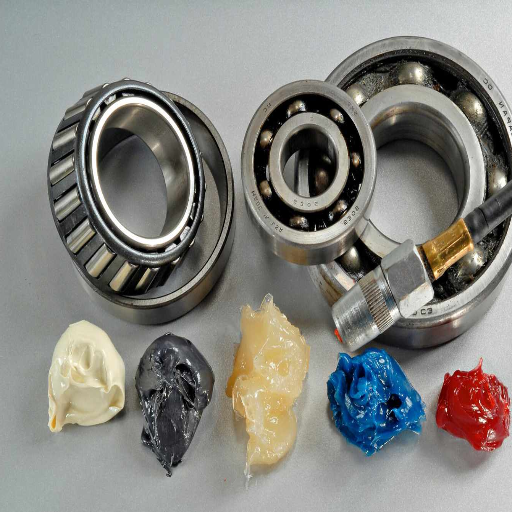
Determining the right amount of thickener for reapplication
It’s important to inspect the operational factors and equipment performance expectations to ensure that the right amount of thickener is applied. The most important factors to consider are:
- Compatibility with Viscosity Grade: The thickener should be by the base oil’s viscosity grade relative to the operational speed, load, and temperature such as the requirement of lower viscosity thickeners in lower viscosity oils for high-speed applications.
- Temperature Stability: The thickener must remain stable within the temperature range of operation of the machinery, meaning it should not soften at high temperatures or harden at low temperatures.
- Shear Stability: Choose thickeners with high mechanical stability to withstand shearing forces in heavily loaded applications.
- Water Resistance: In the case of application environments that are moist or wet, thickeners resistant to emulsification or washout such as lithium complex or calcium sulfonate are appropriate.
- Reapplication Quantity: Stick to guidelines provided by the manufacturer regarding reapplication amounts in order to prevent over or under-lubrication which can lead to excessive heat build up and insufficient film strength, respectively.
Evaluating all of these factors in conjunction with the equipment specifications will enhance lubricant performance and component lifespan.
Signs it’s time to replace used grease
Changing used grease in a piece of equipment at the right time is crucial in ensuring that the piece of equipment performs at its best and does not develop faults. Following are some tips to check for:
- Change of color: If the grease appears to have discolored, has darkened significantly, or is not of the same color as before it may mean that oxidation or contamination has occurred.
- Reduction in thickness: Change in the consistency of a substance like grease can suggest vertical thermal or mechanical breakdown where the grease either to thin or hardens too much.
- Check for contamination: It is possible to check for contaminants like dirt, water or even particles of metal.
- Odor: If the odor has turned burnt or has the appearance of rancid, this could be a sign of thermal damage or lubricant degradation.
- Check for dimnished performance: In some cases, when the moving parts have increased operational temperatures or obscene noises, this could be an indication that lubrication is insufficient and grease is required to be added.
To maintain, and ensure that the analyze piece of equipment operates with optimal performance, I suggest replacing the grease and confirming that it is compatible for the equipment along with meeting the required ASTM and NLGI grade standards.
Frequently Asked Questions (FAQs)
Q: Which grease provides excellent lubrication under moderate loads and also at high temperatures?
A: Lithium-based greases are most commonly recommended as they provide excellent lubrication under moderate loads and at high temperatures. Lithium grease is often used grease in various industrial and automotive applications because it has a wide temperature range (typically -20°F to 350°F), good water resistance, and excellent mechanical stability. The lithium thickening agent combined with appropriate base oils creates a versatile lubricant that adheres well to metal surfaces while maintaining appropriate consistency across varying operating conditions.
Q: What happens to grease consistency at high temperatures?
A: Grease consistency depends significantly on temperature. As temperature rises, grease softens and may eventually liquefy at its dropping point – the temperature at which grease transitions from semi-solid to liquid state. Beyond this temperature limit, grease loses its structure and lubricating capabilities. Proper lubrication requires selecting a grease with a dropping point substantially higher than the maximum operating temperature of the application. High-quality synthetic greases maintain thicker films at elevated temperatures compared to conventional mineral-based formulations.
Q: How do different types of thickeners affect grease performance at high temperatures?
A: The type of thickener used significantly impacts high-temperature performance. Lithium complex greases typically withstand temperatures up to 350°F, while polyurea greases can operate up to 375°F. For extreme conditions, bentonite clay thickeners offer stability up to 500°F, and PTFE-thickened greases can function at temperatures exceeding 500°F. Calcium sulfonate greases combine excellent high-temperature performance with exceptional corrosion protection. Each thickener provides different mechanical stability, water resistance, and compatibility with various types of oils in use for base stocks.
Q: What makes a heavy-duty grease suitable for both moderate loads and high temperatures?
A: A heavy-duty grease suitable for these conditions typically combines several key properties: a high-quality thickener (often lithium complex or calcium sulfonate), a thermally stable base oil (synthetic oils like PAO or ester), and appropriate additives (EP/anti-wear agents, antioxidants, and corrosion inhibitors). The ideal formulation provides adequate mechanical stability under moderate loads while resisting oxidation and breakdown at high temperatures. The grease adheres well to metal surfaces, creating persistent lubricating films even when subjected to heat and mechanical stress over extended periods.
Q: How can I determine if my application requires high-temperature grease?
A: You should evaluate several operating conditions: maximum operating temperature of the equipment, duration of exposure to peak temperatures, load characteristics, speed factors, and environmental conditions. If components regularly operate above 250°F, experience rapid temperature fluctuations, or operate in contaminated environments, high-temperature grease is likely necessary.
Q: How do synthetic-based greases compare to mineral-based greases at high temperatures?
A: Synthetic-based greases significantly outperform mineral-based alternatives at high temperatures and speeds. They offer superior oxidation resistance, extended service life, better viscosity-temperature behavior, and lower evaporation rates. While mineral oil-based greases typically have an upper-temperature limit of 250-300°F, synthetic formulations can function reliably at temperatures exceeding 400°F. The enhanced thermal stability of synthetic base oils means less frequent relubrication, reduced deposit formation, and more consistent performance across temperature extremes. This performance difference makes synthetic greases preferred for critical applications despite their higher initial cost.
Q: What additives improve grease performance under high-temperature conditions?
A: Several key additives enhance high-temperature grease performance: antioxidants prevent oil oxidation and extend service life; anti-wear and extreme pressure additives maintain protection when the grease retains its structure but is thermally stressed; rust and corrosion inhibitors protect as temperature fluctuations may cause condensation; and metal deactivators prevent catalytic degradation of the base oil by metal surfaces. Premium high-temperature greases often include synergistic additive combinations specifically engineered to maintain the delicate balance between oxidation resistance, mechanical stability, and protective properties across demanding temperature ranges.
UCTH213-40J-300 with Setscrew(inch)
CNSORDERNO: Normal-duty(2)
TOGN: UCTH213-40J-300
SDI: B-R1/8
SD: 2 1/2
UCTH212-39J-300 with Setscrew(inch)
CNSORDERNO: Normal-duty(2)
TOGN: UCTH212-39J-300
SDI: B-R1/8
SD: 2 7/16
UCTH212-38J-300 with Setscrew(inch)
CNSORDERNO: Normal-duty(2)
TOGN: UCTH212-38J-300
SDI: B-R1/8
SD: 2 3/8
UCTH212-36J-300 with Setscrew(inch)
CNSORDERNO: Normal-duty(2)
TOGN: UCTH212-36J-300
SDI: B-R1/8
SD: 2 1/4
UCTH211-35J-300 with Setscrew(inch)
CNSORDERNO: Normal-duty(2)
TOGN: UCTH211-35J-300
SDI: B-R1/8
SD: 2 3/16
UCTH211-34J-300 with Setscrew(inch)
CNSORDERNO: Normal-duty(2)
TOGN: UCTH211-34J-300
SDI: B-R1/8
SD: 2 1/8









